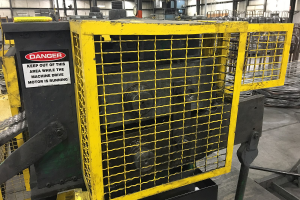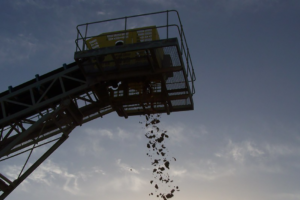OSHA asks new rules on employer safety programs; ups ante on ergonomics
OSHA is launching what agency head David Michaels described Monday as a “long overdue” initiative on injury and illness prevention and plans to increase enforcement on ergonomics. Both initiatives are likely to be extremely controversial.
OSHA is also moving plans to create a combustible dust standard to its long-term regulatory agenda, further extending what has already been a long process. I expect this means the standard is not in our immediate future.
These initiatives and other items OSHA discussed Monday will provide extensive fodder for future postings on this blog. But here are the highlights:
Injury and Illness Prevention Program
The new program would require employers to “find and fix” the hazards in their workplaces. The program “does represent a major paradigm shift for OSHA,” Michaels said in a webcast.
“Employers and others must ‘find and fix’ violations — that is, assure compliance — before a Labor Department investigator arrives at the workplace,” Michaels said. “Employers and others in the Department’s regulated communities must understand that the burden is on them to obey the law, not on the Labor Department to catch them violating the law. This is the heart of the Labor Department’s new strategy.
“We are going to replace ‘catch me if you can’ with ‘Plan/Prevent/Protect,’” Michaels said.
Here is what OSHA said about the proposed program as part of its announcement of its spring regulatory agenda:
“Plan”
“The Department will propose a requirement that employers and other regulated entities create a plan for identifying and remediating risks of legal violations and other risks to workers — for example, a plan to search their workplaces for safety hazards that might injure or kill workers.
The employer or other regulated entity would provide their employees with opportunities to participate in the creation of the plans. In addition, the plans would be made available to workers so they can fully understand them and help to monitor their implementation.”
“Prevent”
“The Department will propose a requirement that employers and other regulated entities thoroughly and completely implement the plan in a manner that prevents legal violations. The plan cannot be a mere paper process. The employer or other regulated entity cannot draft a plan and then put it on a shelf. The plan must be fully implemented for the employer to comply with the ‘Plan/Prevent/Protect’ compliance strategy.”
“Protect”
The Department will propose a requirement that the employer or other regulated entity ensures that the plan’s objectives are met on a regular basis. Just any plan will not do. The plan must actually protect workers from violations of their workplace rights.
“Employers and other regulated entities who fail to take these steps to address comprehensively the risks, hazards, and inequities in their workplaces will be considered out of compliance with the law and, depending upon the agency and the substantive law it is enforcing, subject to remedial action.”
For official OSHA statements on this proposal, click here.
Ergonomics
OSHA earlier announced that it is proposing to revise its recordkeeping regulation by restoring a column on the OSHA Form 300 to better identify work-related musculoskeletal disorders (MSDs). The agency has said that the proposal was not a prelude to proposing a new standard on ergonomics. A previous attempt to create such a standard failed early in the Bush administration.
But Michaels said Monday, “In addition to adding an MSDS column to the 300 log, OSHA will be increasing its enforcement of ergonomic hazards under its General Duty Clause. We are continuing to consider additional approaches to addressing ergonomic hazards.”
Combustible Dust
OSHA also said yesterday it was moving a combustible dust standard to its long term agenda. Here is what Michaels said about that:
“Combustible dust is a priority. However, this is a very complex rule and we are actively doing the necessary research to support this rule. The only reason this is in a long-term action is because the next step, SBREFA Panel Review, is a year out. April 2011 is as soon as we can do the necessary work to initiate a SBREFA review.”
Worried about the possibility of an OSHA inspection? Here’s what to do to be ready.


